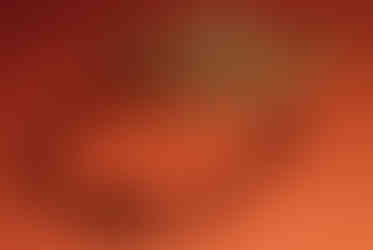Ananta
- Andrew Kelly

- Nov 22, 2020
- 4 min read

Kālīghaṭ painting in the Victoria and Albert Museum

The snake in this painting has a yoga pose named after it—anantāsana, the pose of the Endless One. In the pose (or poses) named anantāsana the body reclines and one leg is raised to represent, or was taken to represent the head (many heads, a thousand heads) of the snake.
Ananta is the serpent of eternity on which the god Viṣṇu sleeps in the gaps between serial universes. When the universe shuts down the snake coils back on itself and floats in an ocean of milk: on it Viṣṇu sleeps and his dreaming begin the new creation. Other names for this snake are Śeṣa/residue, remainder, because it is all that remains in the gaps, and Ādi-śeṣa/residue for the start, because it is the left-over from which everything begins again.
With each new creation the endless coils of the snake unfurl in outward expansion. Not in this picture (see some others below), but for the creation the long stem of a lotus grows out of Viṣṇu’s navel and in the floating lotus (like a control tower for creation) sits the creator god Brahmā who launches the next round. While this is going on Viṣṇu gets a foot massage from his consort Lakṣmī.
Snakes are a widespread symbol of regeneration—because of their skin-sloughing (and in cold climates their winter brumation, a reptile's not quite hibernating: in effect they are gone and will be back). Their fluid coiling suggests repeating cycles but also variability and change. In the ancient Mediterranean the snake was also a symbol of healing, perhaps helped along for Greeks by the double-edged meaning of pharmakon/drug to poison, drug to heal. (That word is likely from ‘pre-Greek’, an unknown language that preceded Greek in the eastern Mediterranean.) Snakes are also convenient for jewellery that rings parts of the body: snake bracelets for both adults and children as amulets to keep them in the cycle of life.
Whether any connection in this is profound or just gratuitous tinselling will depend on your viewpoint. For this particular pose the name is nothing but a visual allusion. But the word ananta had been brought into relation with āsana in general in Patañjali’s Yoga-sūtra 2.47; but that was probably more than a millennium before this pose was invented and before the category of āsana was transformed by the practitioners who came to use the term haṭha/force.
anantāsana is pose 109 in Iyengar’s 1966 Light on Yoga. There is no pose of that name in the earlier haṭha yoga texts such as as the 15th century Haṭha-pradīpikā/Light on Haṭha (or its longer 18th century version) or the 18th century Gheraṇḍa-samhitā/Collection fo Gheraṇḍa.
An anantāsana appears in the 19th century compilation, the Śrī-tattva-nidhi/Treasury of Glorious Reality, where it is the very first pose given:

Image from N.E. Sjoman’s 1996 The Yoga Tradition of the Mysore Palace, p 15.
This pose is quite different from Iyengar’s pose of the same name—and you would have to say it looks more like someone sleeping on a cosmic serpent during the gaps between unfolded universes; though on the other hand the foot behind the head is not as much of an awning. Here is Sjoman’s translation of its instructions, along with pose 2, an uttānāsana, also not like Iyengar’s (uttāna can mean either stretched/extended or supine/lying on the back, just like English stretched out):

Pose 2 uttānāsana:

The yoga section of this text (it is a huge and wide-ranging work) made use of the Haṭhābhyāsapaddhati/handbook of haṭha practice. One of the two surviving copies of this is illustrated, but for some reason it is not currently being made available to researchers. Here is Jason Birch’s translation of the instruction for the pose:

From Jason Birch The Proliferation of Āsana-s in Late-Mediaeval Yoga Texts, in Yoga in Transformation: Historical and Contemporary Perspectives, Vienna 2018, p.149.
Iyengar’s version of anantāsana (which is not necessarily his personal invention) has dispensed with the foot-behind-the-head hip opening and replaced it with a straight leg extension. This brings it into relation with a suite of poses which are all basically the same configuration of the body but on various orientations. These produce altogether different relations to the floor and to coping with gravity: from the strenuous balancing of vasiṣṭhāsana/side plank, the more efficient balance poses padaṅguṣṭhāsana or ardha-candrāsana/half moon pose—or the extended recumbency of anantāsana and the supta/supine floor versions of pādāṅguṣṭhāsana. Sadly, despite a habit I once had of announcing that supta and supine are related, they are not: supine is from Latin sub/under, while supta literally means (fallen) asleep in Sanskrit. As far as I can tell ‘on the back’ is not a normal meaning in Sanskrit, so maybe its use in pose names is after all an allusion to sleeping on the cosmic serpent...
The whole set of poses named here are modern. While anantāsana itself is in 18th and 19th century texts and may go back further, the others belong to a very modern phase of invention. This drew on indigenous wrestling and Western gymnastics, but was also simply inventive and experimental. One mode of that was the rotational proliferation seen in the poses listed just above: take a bodily form and see what it offers on other lines of gravity. Another set: dog pose, daṇḍāsana, boat pose, legs-up-the-wall, box pose, ūrdhva-daṇḍāsana (headstand with legs held horizontal).

Cut-and-paste-up of the rotatory proliferations of sticking one leg out sideways: anantāsana and its friends. Similar forms, very different encounters with gravity and the floor.
Finally, the ananta from a thousand or more years earlier where it occurs in Patanjali’s yogasūtra 2.47
sthira-sukham āsanam || YS_2.46 ||
āsana/seated practice (becomes) stable and comfortable
prayatna-śaithilya-ananta-samāpattibhyām || YS_2.47 ||
by means of the release of effort and through engagement with the unending.
As Sjoman noted above one of the commentators proposed that ananta here is the serpent. That kind of graphic, mythological, devotional detail would fit with a haṭha text which are packed with baroque and sometimes tacky visualisations (‘imagine your guru enthroned on an island of floating jewels...’). In the severe, pre-tantric, pre-haṭha world of the yogasūtra something more abstract may be intended.
Images mostly from the Victoria and Albert Museum, details to come.





























Comments